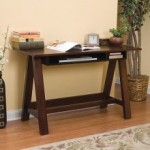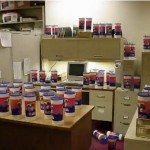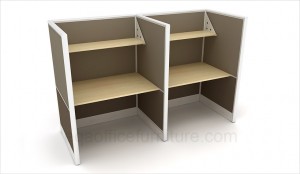 Earlier this year, a major case goods importer in California merged its commercial and residential furniture lines. This means office pieces like desking units and conferences tables are now available in the same catalog as coffee tables and corner hutches. Coaster originally had its office furniture line more clearly delineated as contract furniture. Since 6 out of 10 distributors of Coaster’s imports carry a blend of commercial and residential furnishings, keeping them separate in terms of marketing made less and less sense. Streamlining both marketing and administration processes with a merged system was simply more resource effective
Earlier this year, a major case goods importer in California merged its commercial and residential furniture lines. This means office pieces like desking units and conferences tables are now available in the same catalog as coffee tables and corner hutches. Coaster originally had its office furniture line more clearly delineated as contract furniture. Since 6 out of 10 distributors of Coaster’s imports carry a blend of commercial and residential furnishings, keeping them separate in terms of marketing made less and less sense. Streamlining both marketing and administration processes with a merged system was simply more resource effective
The Divide is Shrinking across the Industry
Increasingly, the line between commercial and residential furniture seems to be blurring. Commercial pieces are likely to end up in a home office if they meet consumer needs. Someone working at home is just as likely to want a high quality Steelcase or Herman Miller chair as an office furniture buyer in a corporate environment. And they may actually be more inclined to pay for it since they get the direct benefit of sitting in it every day instead of buying it for an employee. The web has made it simple for residential consumers to browse contract furniture online from all the top manufacturers. So, some companies are deciding to tap that market by selling select items from seating to casegoods via chain retailers. Most will also sell directly B2C online as well.
Differences Remain
There are many types of office furniture that are simply not suited to residential use. Components such as reception desks, conference tables, cubicles, and architectural walls are still the province of commercial office customers. Companies that focus mainly on providing panel systems and other high volume contract pieces will probably not spend a significant amount of their marketing budget on reaching residential customers. However, even the largest companies are making an effort to connect with the general public and residential customers through a strong web presence. It never hurts to be a “household” name. After all, the purchasing agent signing a bulk buying contract wants to make a deal with a company that comes across as caring about each and every customer.










